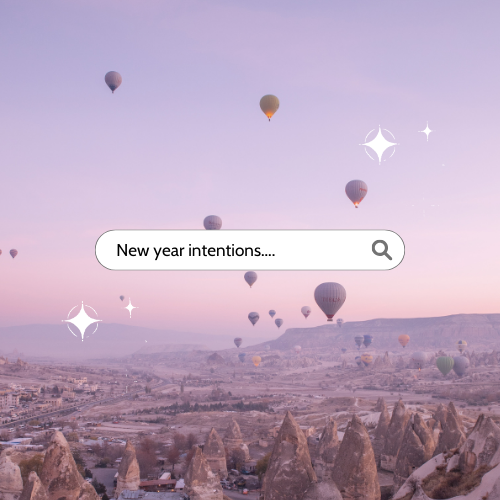Setting Your Intention for the New Year
New Year resolutions vs. New Year intentions
If you’ve tried setting New Year resolutions and failed, you’re not alone. The Forbes Health/One Poll survey found that the average resolution lasts just 3.74 months. While setting New Year resolutions is an incredibly common practice, following through with all of them is not. What makes following through on New Year resolutions so difficult? One reason is that many people evaluate their successes as “pass” or ‘fail” and end up feeling discouraged when they don’t achieve all of their goals. Another reason, according to behavioural scientist Professor Katy Milkman of the University of Pennsylvania, is because “Good goals stretch you; they push you a little beyond where you would naturally go. And a stretch, by definition, is something that you can’t always hit.”
New Year intentions, on the other hand, can help you live as the best version of yourself every day because it helps align your priorities and values by giving your mind a singular focus. When we assign intentions for ourselves, we set up guiding principles for who we want to be, how we want to act, and what we want to prioritize in our lives—all of which are especially important for leaders. While our goals or resolutions come and go, our intentions act as an anchor and guide us toward our aspirations. While resolutions focus on what you want to achieve, intentions focus instead on how you want to live.
Setting your intention
Intentions are a choice we have to actively make every day to be the best versions of ourselves. So, when you choose your word or theme, focus on a verb or a noun that can give you direction for the year ahead. You want to focus your energy on something you feel particularly drawn towards and take your time in selecting your word or theme. Here are 5 practical steps you can take to set your intention for the new year:
- Write down what matters most
Your intentions are based on the things you value, so knowing what is important to you is the first step in setting an intention. You can start by writing down a list of things that matter to you. This can include your family, your job, travelling, saving money, etc. Write down anything and everything that comes up in your mind and don’t be afraid to use this space to dump out all your thoughts. - Categorize your values
Look at what you’ve written and group the things in your list that share similar characteristics. For instance, if you want to take a new professional development course and you also want to make more time for networking, then “professional growth” could be one of your values for the new year. If you want to learn to let go of unhealthy habits and you also want to practice yoga regularly, then “inner peace” could be another one of your values. - Identify your core values
Once you’ve grouped all the items on your list into values, take some time to reflect on them. Which ones stand out most to you? Remember that identifying your core values doesn’t have to mean your other values are less important. It’s simply a way to help you direct your energy and attention to the values you want to prioritize in the new year. After all, no one can focus on everything all the time. Trust your gut and don’t overthink it. - Decide on your anchor
Take your core values and use them to select a word or theme. This will serve as the anchor for your intention. Do your core values share things in common? Is there a word you feel drawn towards? Using the example of “inner peace” and “professional growth”, your anchor might be “balance” if you want to prioritize both, or “proactive” if you want to prioritize taking charge of your actions. - Visualize your intentions
Picture yourself a year from now. What do you see? Is there an image of a calmer, more confident you? Use this image of future-you as fuel to visualize your intentions for the new year. You can scribble them on some sticky notes, create a mind map or design a vision board. Whichever method you choose, make sure you can easily see your intention daily so it can serve as a reminder throughout the year.
Setting your intention can take time and patience. If you get stuck, it’s okay to take a break and come back to it later. Remember to give yourself compassion. An intention only works if you actively make decisions that align with your intention. By setting the right intention and holding yourself accountable, you can be the best version of yourself. Every day is a fresh start, so don’t be afraid to take control of your life. Choose to be intentional.




